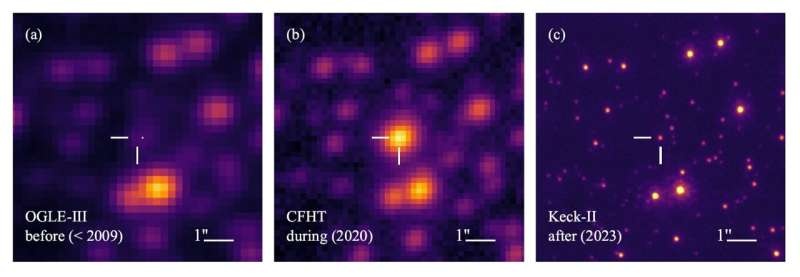The discovery of an Earth-like planet orbiting a white dwarf star offers a glimpse into the potential fate of our own planet when the Sun becomes a red giant and eventually a white dwarf. This remarkable finding provides both a warning and a glimmer of hope for the future of life on Earth.

Revealing a Remote Planetary System
In the image above, the discovery of an Earth-like planet 4,000 light years distant in the Milky Way galaxy. Detected by University of California, Berkeley (UC Berkeley) researchers, this remote planetary system is composed of a white dwarf star orbiting an Earth-sized companion planet at twice the distance.
This system may thus offer a window on the future of our own solar system as the Sun reaches old age, expands and engulfs the inner planets before shedding its outer layers and adopting a white dwarf state. The finding hints that Earth could fare through this turbulent transformation, moving further away to take on a new life in the outskirts of the solar system — where ice moons like Europa, Callisto, or even Enceladus might become ocean worlds fit for life.
Fate of Earth… the Possibility of Survival
Based on that work, the researchers believe the Sun’s belly flop into ignoble red giant status could get underway in one billion years at a minimum, vaporizing Earth’s oceans and expanding our planet’s orbital radius by 2.5 times. That’s the good news, sort of: The grand total is 7 billion years or so until we’re all gone.In other words, it will take about that long for our planet to be swallowed up by the expanding Sun. Or not; no one really knows whether Earth will manage to move to a more distant orbit.
The study estimates that whether or not Earth survives the Sun’s expansion during its red giant phase, is irrelevant because after one billion years of being left, even if it narrowly avoids falling in the Solar envelope and drowns in a runaway greenhouse effect. This uncompromising forecast is a wake up call for all of us because it emphasizes the necessity for humanity to explore other options on how our species can survive in the long run.
That might include a mass emigration of humanity to the moons of Jupiter and Saturn, which could be pushed into newly habitable territory as the Sun expands. According to the researchers, these frigid water worlds can melt and turn into ocean planets hospitable for life — and could even serve as a new home for us humans in tens of billions of years.
Conclusion
The annoucement of an Earth-like planet orbiting a long dead white dwarf star shocks us to remember how fickle our existence on the planet truly is and to make sure we ready ourselves for the inevitable changes headed to shape this terrafirm. As grim as those odds are, the fact life has proven so persistent and human beings so resourceful that we hold out a glimmer of hope; hope that lets us entertain thoughts about our continued survival even if it means adapting to new environments or journeying into the solar system and beyond.
